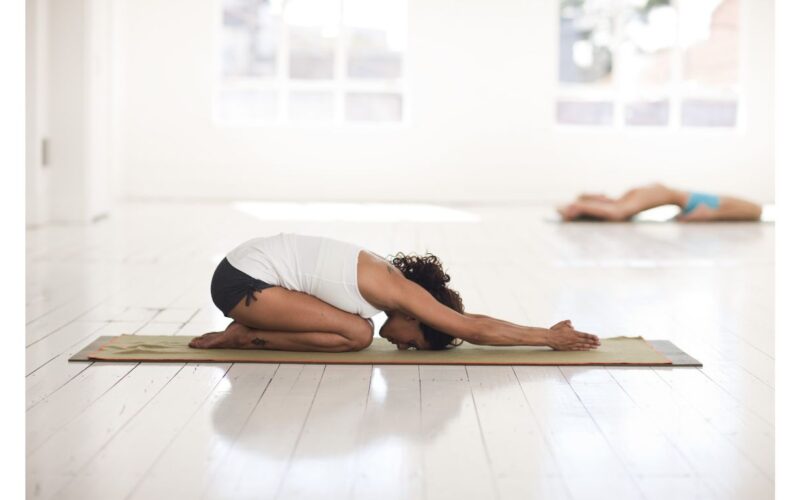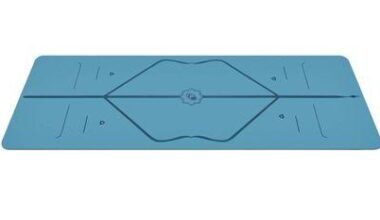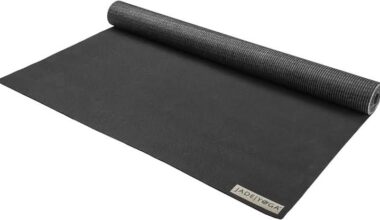Table of Contents Show
Yoga is a form of physical, mental, and spiritual practice that has been around for thousands of years. Practicing yoga can help you improve your flexibility, balance, and strength, and it can also help reduce stress and anxiety. One of the most important things to consider when practicing yoga is your mat position. Proper mat placement and alignment can help you get the most out of your practice, prevent injury, and improve your overall experience. In this article, we will provide you with a comprehensive guide to yoga mat positions.
Understanding the Importance of Yoga Mat Position
When practicing yoga, it is essential to have a stable and non-slip surface to perform the various postures or asanas. A yoga mat is specifically designed to provide this surface, as well as to provide cushioning and support for your joints. However, simply having a yoga mat is not enough. Proper mat placement and alignment are crucial for getting the most out of your practice and preventing injury.
Disclosure: As an Amazon Associate I earn from qualifying purchases.
Basic Yoga Mat Placement
The basic mat placement for most yoga styles is to place your mat perpendicular to the front of the room or the instructor, with enough space for you to stretch your arms and legs in all directions without hitting anything. It is important to keep a safe distance from the other students in the class and ensure you have enough room to move around. If you are practicing yoga at home, make sure you have enough space to move without any obstructions.
Proper Alignment for Common Yoga Poses
In addition to basic mat placement, proper alignment is essential for performing various yoga poses safely and effectively. Here are some guidelines for proper alignment for common yoga poses:
Downward-Facing Dog

- Place your hands shoulder-width apart and your feet hip-width apart.
- Press firmly into your hands and feet, lifting your hips up and back.
- Keep your head and neck relaxed, looking towards your toes.
- Press your chest towards your thighs, lengthening your spine.
- Keep your knees slightly bent if necessary.
Warrior I

- Step your right foot forward and your left foot back, with your feet about hip-distance apart.
- Turn your left foot out 45 degrees and your right foot in slightly.
- Square your hips towards the front of the mat.
- Bend your right knee, stacking it directly over your ankle.
- Raise your arms overhead, keeping them shoulder-width apart and relaxing your shoulders away from your ears.
- Gaze forward or up towards your hands.
Tree Pose

- Begin in Tadasana or Mountain Pose.
- Shift your weight onto your left foot, lifting your right foot off the ground and placing the sole of your foot against your left inner thigh or calf.
- Press your foot and leg into each other, finding balance.
- Place your hands in prayer position at your heart, or raise them overhead.
- Keep your gaze focused on a fixed point in front of you.
Child’s Pose

- Begin on your hands and knees.
- Bring your big toes together and widen your knees.
- Sit back onto your heels and reach your arms forward, resting your forehead on the mat.
- Relax your shoulders and neck and breathe deeply.
You may also like The Ultimate Guide to Ab Workout on Yoga Mat: Strengthen Your Core with a Smile in 5 Steps
Tips for Advanced Yoga Poses
As you progress in your yoga practice, you may attempt more advanced poses that require proper alignment and mat placement. Here are some tips for advanced yoga poses:
- Consult with a qualified instructor before attempting any advanced poses.
- Always warm up and prepare your body before attempting advanced poses.
- Use props, such as blocks and straps, to help you achieve proper alignment and support.
- Never force yourself into a pose that causes pain or discomfort.
Conclusion
Yoga is a wonderful practice that can help improve your physical, mental, and emotional well-being. Yoga mat positioning is an often-overlooked aspect of yoga practice, but it can make a significant impact on your comfort, safety, and ability to focus.





Comments are closed.